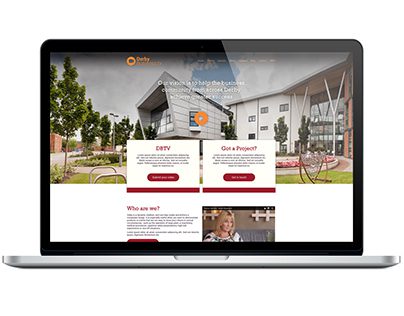Creating a real estate website in 2025 is a strategic move to tap into the ever-growing online property market. This guide will walk you through each step, from planning to launching a fully functional real estate website. We will also address FAQs and provide helpful links to get you started.
Table of Contents
- Why Create a Real Estate Website?
- Planning Your Real Estate Website
- Define Your Niche
- Research the Market
- Understand Your Target Audience
- Key Features of a Real Estate Website
- Property Listings
- Search Functionality
- Interactive Maps
- User Accounts and Dashboards
- Mobile Responsiveness
- Choosing a Domain and Hosting Provider
- Selecting the Right Platform
- WordPress
- Wix
- Custom Development
- Designing Your Website
- Themes and Templates
- UI/UX Best Practices
- Developing Core Functionalities
- IDX/MLS Integration
- Advanced Filters
- Contact Forms
- Content Strategy for Real Estate Websites
- Blog Posts
- Virtual Tours
- Testimonials
- SEO and Digital Marketing for Real Estate
- Keyword Optimization
- Social Media Strategies
- Paid Advertising
- Testing and Launching Your Website
- Maintenance and Updates
- FAQs
1. Why Create a Real Estate Website?
The real estate industry thrives on visibility and trust. A dedicated website helps:
- Showcase properties to a larger audience.
- Build credibility and brand identity.
- Provide 24/7 access to information.
- Streamline customer interactions.
In 2025, the online real estate market is expected to grow by 15%, making it essential for real estate professionals to establish a strong digital presence.
2. Planning Your Real Estate Website
Define Your Niche
Real estate covers various segments. Focus on:
- Residential properties
- Commercial properties
- Rentals
- Luxury real estate
Research the Market
Analyze competitors to identify gaps and opportunities. Use tools like Google Trends and SEMrush to understand market demands.
Understand Your Target Audience
Identify the needs and preferences of your audience. Consider their:
- Age
- Income level
- Location
- Property preferences
3. Key Features of a Real Estate Website
Property Listings
Include high-quality images, videos, and detailed descriptions.
Search Functionality
Allow users to filter properties by:
- Price
- Location
- Size
- Amenities
Interactive Maps
Use Google Maps or Mapbox to provide location insights.
User Accounts and Dashboards
Enable users to:
- Save searches
- Bookmark properties
- Track inquiries
Mobile Responsiveness
Ensure your site is optimized for mobile devices. Over 70% of real estate searches are conducted on smartphones.
4. Choosing a Domain and Hosting Provider
Domain Name
Pick a memorable and relevant domain name. Tools like Namecheap can help.
Hosting Provider
Choose a reliable hosting provider like:
- Bluehost
- SiteGround
- HostGator
5. Selecting the Right Platform
WordPress
Pros:
- Flexibility
- Wide range of plugins (e.g., RealHomes)
Cons:
- Requires some technical knowledge
Wix
Pros:
- User-friendly
- Built-in templates for real estate
Cons:
- Limited scalability
Custom Development
Pros:
- Tailored features
- Unique design
Cons:
- High development cost
6. Designing Your Website
Themes and Templates
Use real estate-specific themes like:
- Astra (WordPress)
- Divi (WordPress)
UI/UX Best Practices
- Use a clean layout.
- Highlight call-to-action buttons.
- Ensure fast loading speeds.
7. Developing Core Functionalities
IDX/MLS Integration
Integrate listings from MLS databases using plugins like IDX Broker.
Advanced Filters
Allow users to search by:
- Year built
- Neighborhood
- School ratings
Contact Forms
Use plugins like WPForms for inquiries.
8. Content Strategy for Real Estate Websites
Blog Posts
Write articles on:
- Market trends
- Home-buying tips
Virtual Tours
Use tools like Matterport to create 3D tours.
Testimonials
Showcase reviews to build trust.
9. SEO and Digital Marketing for Real Estate
Keyword Optimization
Target terms like:
- “Houses for sale in [City]”
- “Best real estate agents in [City]”
Social Media Strategies
Post property updates and engage with followers on platforms like Instagram and Facebook.
Paid Advertising
Use Google Ads and Facebook Ads to reach a targeted audience.
10. Testing and Launching Your Website
Testing
Check for:
- Broken links
- Slow loading pages
- Mobile compatibility
Launching
Promote your website through email campaigns and social media.
11. Maintenance and Updates
Regularly update your website with new listings, blog posts, and features to stay competitive.
12. FAQs
Q: How much does it cost to build a real estate website?
A: Costs can range from $500 for basic setups to $10,000+ for custom development.
Q: Do I need coding skills to create a real estate website?
A: No. Platforms like WordPress and Wix make it possible to build websites without coding.
Q: What is IDX integration?
A: IDX (Internet Data Exchange) allows your website to display live property listings from MLS databases.
Q: Can I monetize my real estate website?
A: Yes. Use methods like:
- Featured property listings
- Google AdSense
- Affiliate marketing
Q: How can I drive traffic to my real estate website?
A: Utilize SEO, social media, and paid advertising.
By following this guide, you can create a professional real estate website that stands out in 2025. Use the links provided to access tools and resources for a seamless experience.
Chirag Singh is a content writer with a focus on real estate, covering topics like News, Guidance, Tips, Property trends and Investments. He has written for various platforms, providing helpful insights to readers. With a background in real estate, Chirag combines his knowledge and passion for real estate in his work. He enjoys staying updated on the latest industry trends.

